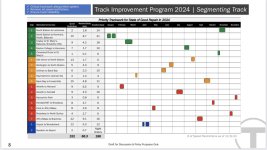This is actually a really good example. Let’s nail the point home:
If you are standing at KFC on North Beacon in Allston, it would take you:
- The same amount of time to get to South Station via the Worcester Line from Boston Landing as Red Line Alewife to JFK/UMass with no slow zones.
- The same amount of time to get to South Station via the B-Branch of the Green Line and walking from Park St as Red Line Alewife to JFK/UMass at the recent slow zone peak.
So then the question is, would residents prefer that trip via B-Branch every four minutes or via Commuter Rail every 15 minutes? I think the answer is clear.
Obviously, it should be fast
and frequent though. But anyone should see that the slow zones have been so much more extreme, that this insane B-Branch to Commuter Rail example actually works.


